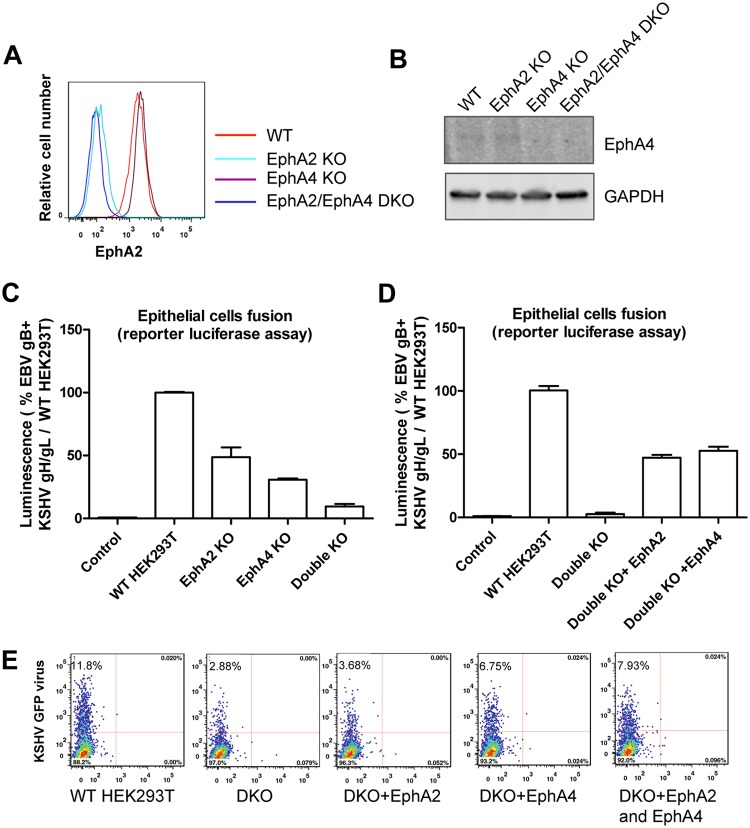FIG 3.
EphA4 is the potential epithelial cell receptor for KSHV. (A) EphA2 cell surface expression in EphA2 and EphA4 single- or double-knockout (DKO) HEK293T cells by flow cytometry. The x axis represents the relative number of cells analyzed by flow cytometry with a particular level of EphA2 expression. The y axis represents the level of expression within the analyzed cell population on a log scale. (B) EphA4 expression in EphA2 and EphA4 single- or double-knockout HEK293T cells by Western blotting. Glyceraldehyde-3-phosphate dehydrogenase (GAPDH) was used as a loading control. For fusion function of knockout cell lines, CHO-K1 cells transfected with T7 luciferase and either a control plasmid or KSHV gH/gL with EBV gB were overlaid with EphA2 and EphA4 single- or double-knockout cells together with T7 polymerase (C), or EphA2-EphA4 double-knockout cells overexpressing EphA2 or EphA4 together with T7 polymerase (D). (E) WT or EphA2 and EphA4 double-knockout cells were transfected with EphA2, EphA4, or EphA2-EphA4 and infected with KSHV as described in Materials and Methods. Twenty-four hours post-infection, cells were analyzed by flow cytometry. Percentage of infected cells, which are GFP positive, are as indicated in panel E.

